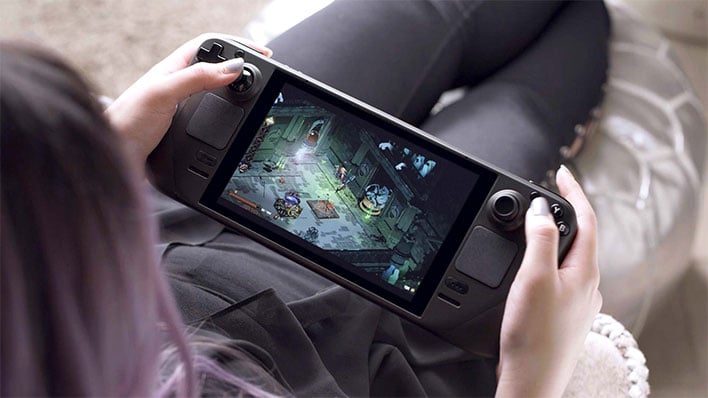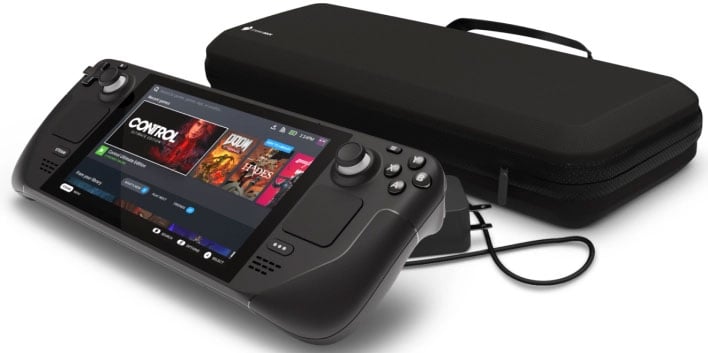Gabe Newell Proclaims Openness Is Steam Deck's Superpower Against Game Consoles

Fair or not, Valve's recently announced Steam Deck is drawing comparisons to the Nintendo Switch, the result of both systems being built around a handheld form factor. They are not really the same thing, obviously—Steam Deck is a PC in handheld portable form, and the Switch is dedicated console. There are valid comparisons to be made, though, Valve's Gabe Newell points to the open nature of the PC platform as a big advantage in favor of the Steam Deck over some other systems and consoles.
Out of the box, the Steam Deck runs a new version of SteamOS (version 3.0), an Arch-based Linux operating system that is optimized for the handheld, and powered by the KDE Plasma 5 desktop environment. There's also a Proton compatibility infused into the OS.
Since the Steam Deck is a PC platform, users can actually install Windows on it if they really wanted to. Valve doesn't recommend doing this because wiping SteamOS in favor of Windows means all of the company's UI optimizations disappear. But it's possible. Users can also install other app stores on the Steam Deck.
"Our view is that the openness of the PC ecosystem is the superpower that we all collectively benefit from. So if you want to install the Epic Games Store on here, if you want to, you know, run an Oculus Quest on it, those things are, those are all great. Those are features, right? That's what I want to hear as a gamer," Newell told IGN during a recent interview.
We tend to agree with the overall philosophy—the flexibility of the PC platform is part of what makes it so great, and expandable. That's not to say the Switch is not also great at what it does. As we noted in our Nintendo Switch review, it's a fantastic handheld, and even better now with a fleshed out catalog of games (we're also looking forward to the OLED version that is coming out, even though the rest of the hardware remains the same).
That said, the Switch is also a closed platform. Same goes for consoles like the Xbox Series X/S and PlayStation 5, despite both sporting hardware that is based on common PC component architectures, like Zen 2 and RDNA 2.
"I don't want to hear that somebody's got some Trojan Horse that's going to try to lock me down. I want to hear, whatever I want to do, if there's hardware I want to attach to it, if there's software I want to install. I can just go and do it. And you know, we think that's great."

Valve had some definite goals when designing the Steam Deck. One was the ability to deliver "great performance" for games. This was the "fundamental thing" that drove the makeup of the Steam Deck, and as discussed previously, Valve considers 30 frames per second at the screens native 1280x800 resolution to be the minimum for a playable experience.
Being an open platform was the other major consideration.
"It had to be open. That was thing. It was like, I just want to be a gamer who's used to playing PC games. I want to pick this up and say, 'Oh, it all works. It's all fast.'," Newell said.
Newell acknowledged there will always be some compromises with this sort of thing, but hopes he and the team "made the right trade-offs." Valve will find out soon enough. In the early going, however, there is a lot of interest in the Steam Deck.
Buyers can reserve a Steam Deck for $5 down. The initial batch of reservations that will ship out this December have sold out, and now it shows availability for new reservations as being in or after the second quarter of next year, depending on the SKU.
You can check out the full Gabe Newell interview for what else he had to say about the Steam Deck, and if interested, you can reserve a Steam Deck for $399 for the 64GB eMMC model, $529 for the 256GB NVMe SSD model, and $649 for the 512GB NVMe SSD.

